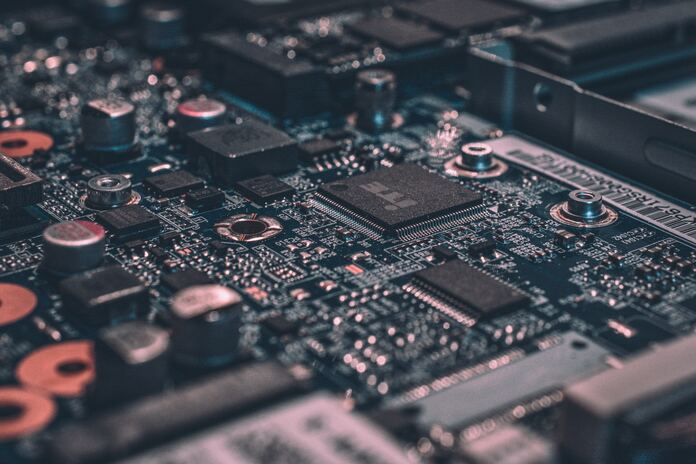In recent years, the technology industry has experienced extraordinary growth, which has been accelerated by the introduction of artificial intelligence and machine learning. Advanced Micro Devices, Inc. (NASDAQ:AMD) is a key industry participant, commonly considered as one of the world’s three leading computer chip producers, with competitors Nvidia Corporation (NASDAQ:NVDA) and Intel Corporation (NASDAQ:INTC). Underlying this bullish market behavior is a more conservative opinion that claims AMD stock has risen in price in accordance to its price-to-earnings (P/E) ratio.
AMD processors are currently used in more than 30% of the world’s computing devices, garnering substantial attention and financial interest. This article investigates the possibility that the market’s enthusiasm for Advanced Micro Devices is unwarranted.
In the first quarter of 2023, AMD’s total revenue was $5.4 billion. This figure is 9% lower year on year when compared to the entire sales of $5.9 billion in Q1 2023. This, I believe, marks AMD’s first step into its current bad market performance.
We can clearly observe that AMD has struggled to maintain the highs of this publicity drive since its highest sales of $6.6 billion in Q2 2022, which coincides with the dramatic boom of AI and the public release of Chat GPT. It has captured substantially less market share in the data center industry than its immediate competitor, Nvidia.
This could possibly be connected to the performance of their GPUs. Historically, and even now, Advanced Micro Devices flagship GPUs are just behind Nvidia’s range. In an industry where every minute boost in performance matters, buyers should buy an Nvidia GPU rather than an AMD GPU.
AMD’s performance differs between segments. The Data Center segment’s operating income was essentially steady, however the Gaming segment’s operating income fell. The Client sector lost money, whereas the Embedded segment had a decline in net revenue but an increase in operating profits.
Advanced Micro Devices’ earnings per share (EPS) have dropped considerably. AMD reported an EPS of $(0.09) in Q1 2023, compared to $0.56 in the same quarter the previous year, suggesting a dramatic fall of -116% year on year.
AMD’s EPS fell as a result of the client segment’s performance and the effects of amortizing acquisition-related intangible assets, to name a few factors. Due to challenges in the client segment, there was an overall operating loss of $(145) million in the most recent quarter, which was much lower than the previous year’s massive overall operational profit of $951 million. This drop in operating profitability illustrates the constraints faced by lower client segment revenue, which has required AMD to limit processor shipments below production in order to significantly reduce inventory holdings.
According to AMD’s financial records, amortization of acquisition-related intangible assets has also climbed dramatically. These intangible assets, such as Xilinx, which AMD purchased last year, are usually related to the acquisition of other businesses and their technology assets in order to assist AMD reduce operational expenses. While purchasing Xilinx may have long-term strategic benefits because Xilinx provides embedded circuits such as field-programmable gate arrays (FPGAs) and adaptive compute acceleration processors for AMD, the associated amortization expenses may affect short-term profitability for investors like you and me.
One aspect of the market that fascinates me is how psychology plays a huge role. Recently, we witnessed one of the most significant shifts in investor mood. Many investors were convinced of the bearish case in October 2022, but many have recently become positive as the market displays signals of a likely reversal. It will be interesting to see how this movement in sentiment influences market dynamics.
However, I would stress that now may not be the best time to enter the technological business. Extreme levels in market indicators such as the put-call ratio and the all-investor sentiment survey indicate complacency. These indicators have reached overly optimistic levels, which can be a red flag. It is critical to exercise caution when everyone appears unduly hopeful.
At the time of writing, the scenario may be more beneficial for the future. The P/E ratio for Advanced Micro Devices is an astonishing 49.62x, showing that the shares have grown overvalued in comparison to the earnings generated. The market’s euphoria over AMD’s growth potential has resulted in an inflated value that appears detached from the company’s present financial performance, owing to the concentration on the data center industry during the commercial Artificial Intelligence and Machine Learning boom.
To decide whether the high P/E ratio is justified, I believe you should proceed with care and do a thorough review of AMD’s financial health, competitive landscape, and growth prospects. It is critical to examine the company’s capacity to address client concerns, efficiently manage acquisition-related expenses, and maintain or improve profitability in the future.
AMD Stock Is A Sell
While Advanced Micro Devices has clearly profited on expanding trends in AI and gaming, optimism must be balanced with a fair appraisal of the company’s valuation. The current market climate, along with concerns about an upcoming correction, suggests that AMD shares have become expensive and vulnerable to a market slump. Before devoting considerable capital to this high-growth but potentially expensive business, investors should take prudence and thoroughly examine the risks. However, I believe that AMD stock is a sure SELL in this market.
Featured Image: Unsplash © Alexandre Debiève















